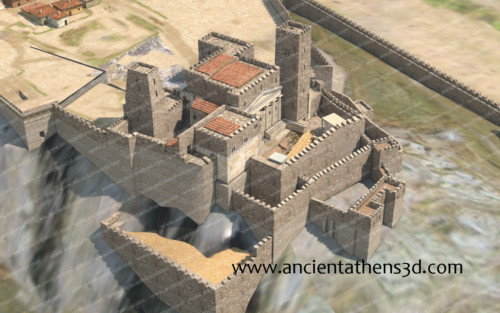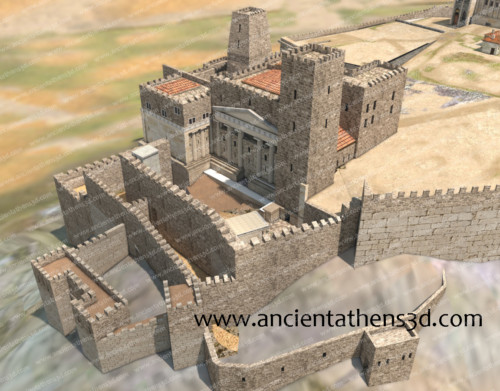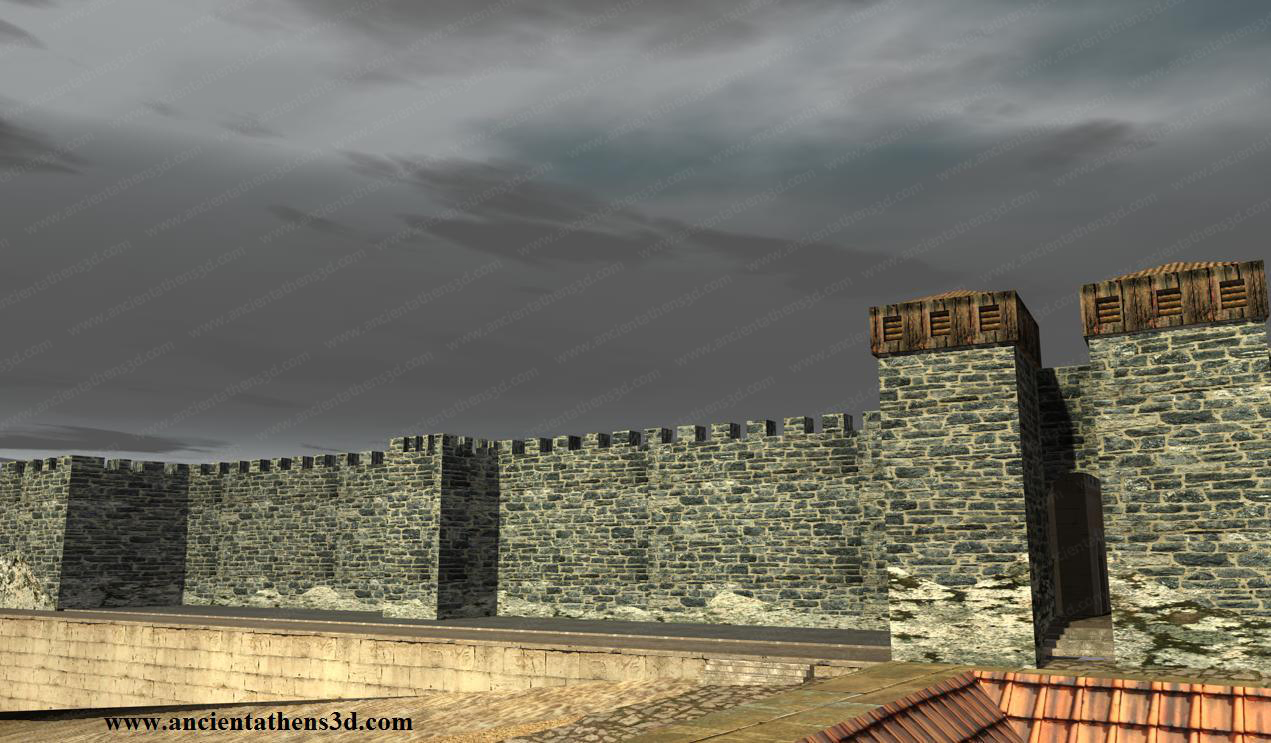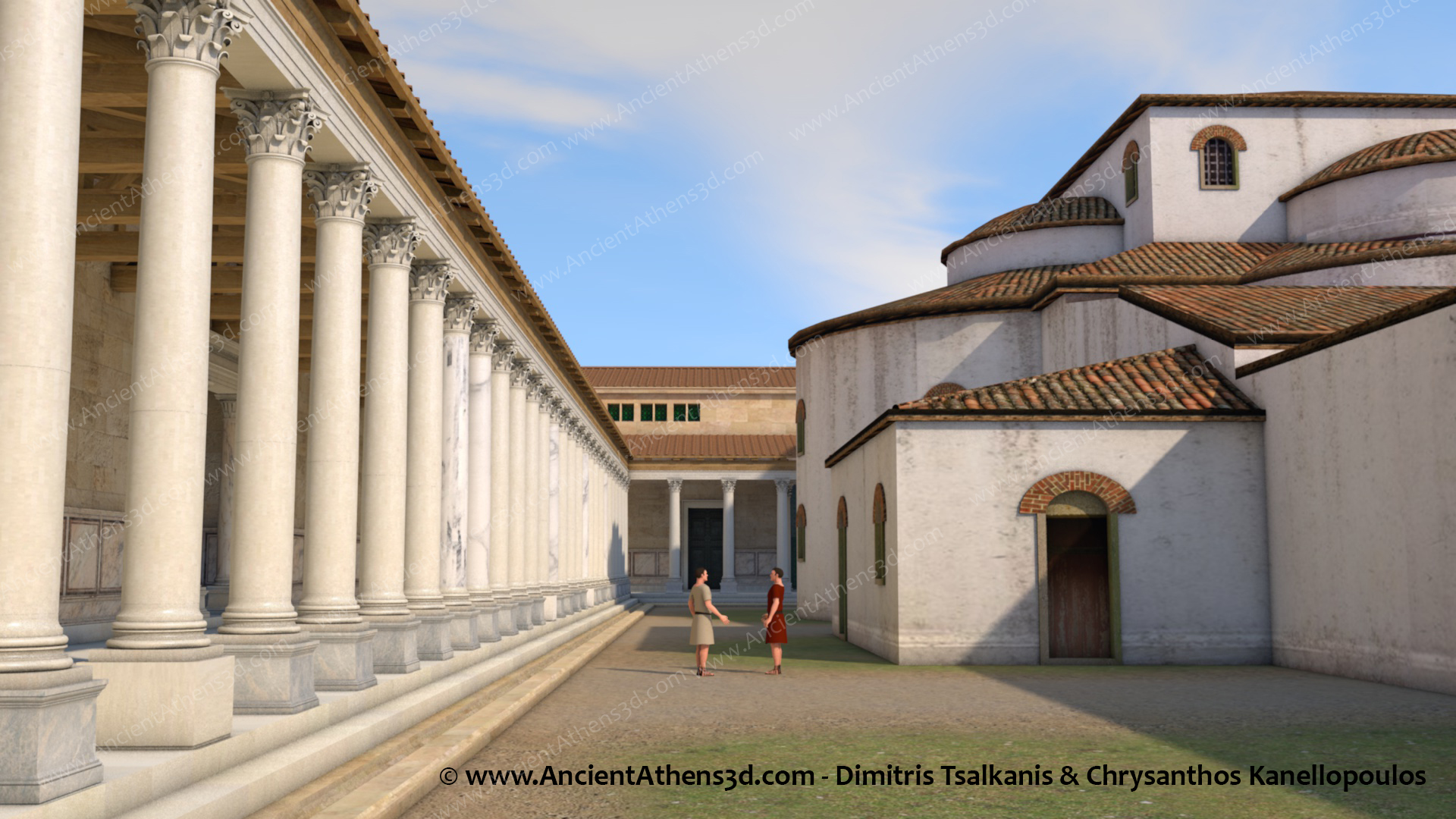Medieval Acropolis (1450)
During this period only the Parthenon, the Propylaea and the Erechtheion still existed from the ancient structures on the Acropolis. The hill was refortified with the addition of towers. The monuments were converted either to churches or to fortresses and houses started to slowly occupy the empty areas. The hill changed image depending on who owned the city (Byzantines, Franks, Catalans, Venetians). Herein, the monuments are depicted as they were in around 1450.
The Parthenon becomes a christian church
The Parthenon had suffered fire damages possibly from the Heruli invasion in 267 A.D. It was in this fire that the roof collapsed and the inner double colonnade was destroyed. In the repairs that followed, it was economically impossible to restore the roof as it was. Therefore, a new one was constructed which only covered the cella, leaving the outer colonnade uncovered.
After the order to convert the ancient temples into christian churches, the Parthenon was dedicated (possibly in the 6th century) to the Holy Wisdom and later to Mary the Mother of God in Athens (Panagia i Athiniotissa). On the east façade, the entrance was blocked in order to create an arch for the Sanctuary. The interior was richly decorated with frescoes and mosaics, the most famous of which, was the one of Mary on the cupola of the Sanctuary. In the first years of the Latin Domination (13th c.), a tower (probably a bell tower) was built in the south part of the opisthonaos and the temple became a catholic church of Notre Dame.The Propylaea fortress and palace
The Propylaea met many different phases of conversion to a fortress. In here, the building is presented in its later form. At a great extent, these fortifications and the towers were still visible until 1835 when were torn down in favour of the neoclassical movement that was dominating Europe at this time.

The Propylaea from the northwest. The central staircase was modified to a helical road between the walls. The central entrance of the building is sealed and the entrance is for security reasons being done from the back.

The Propylaea from the southwest. The space between the columns is closed with stones, while on the second floor are the apartments of the governor.
The Erechtheion


















